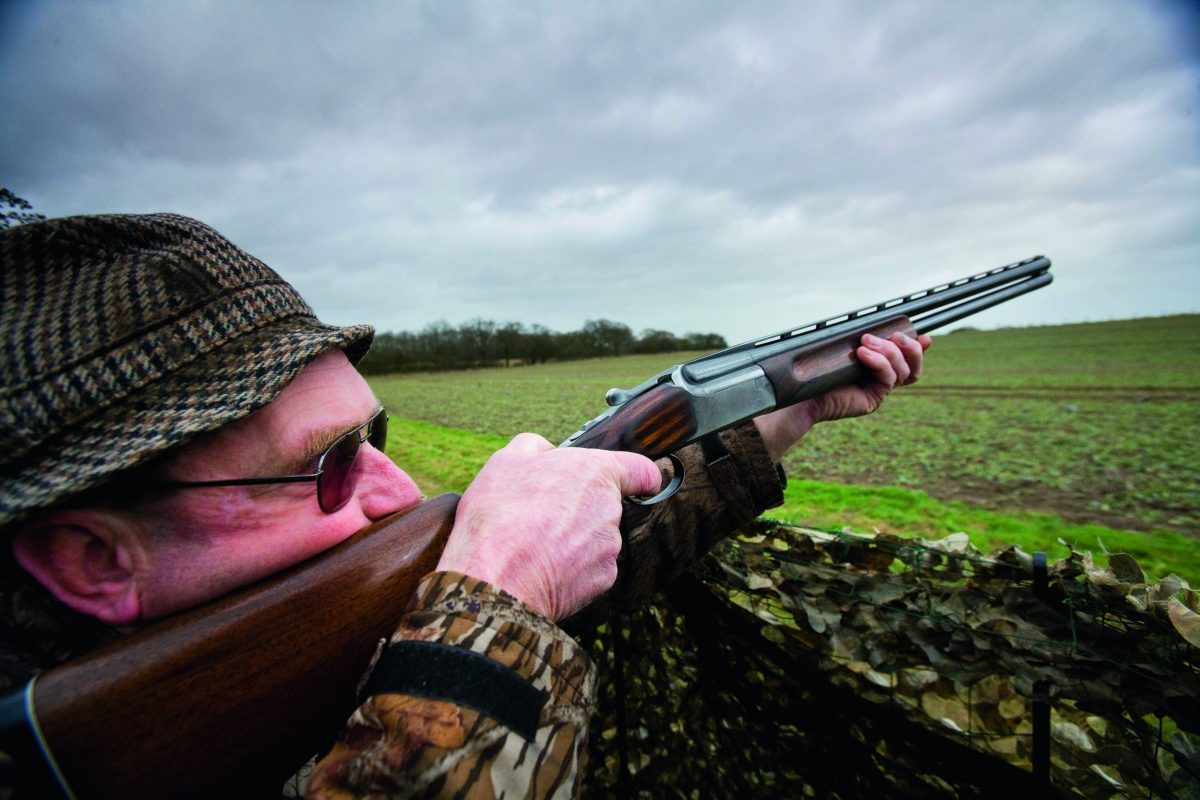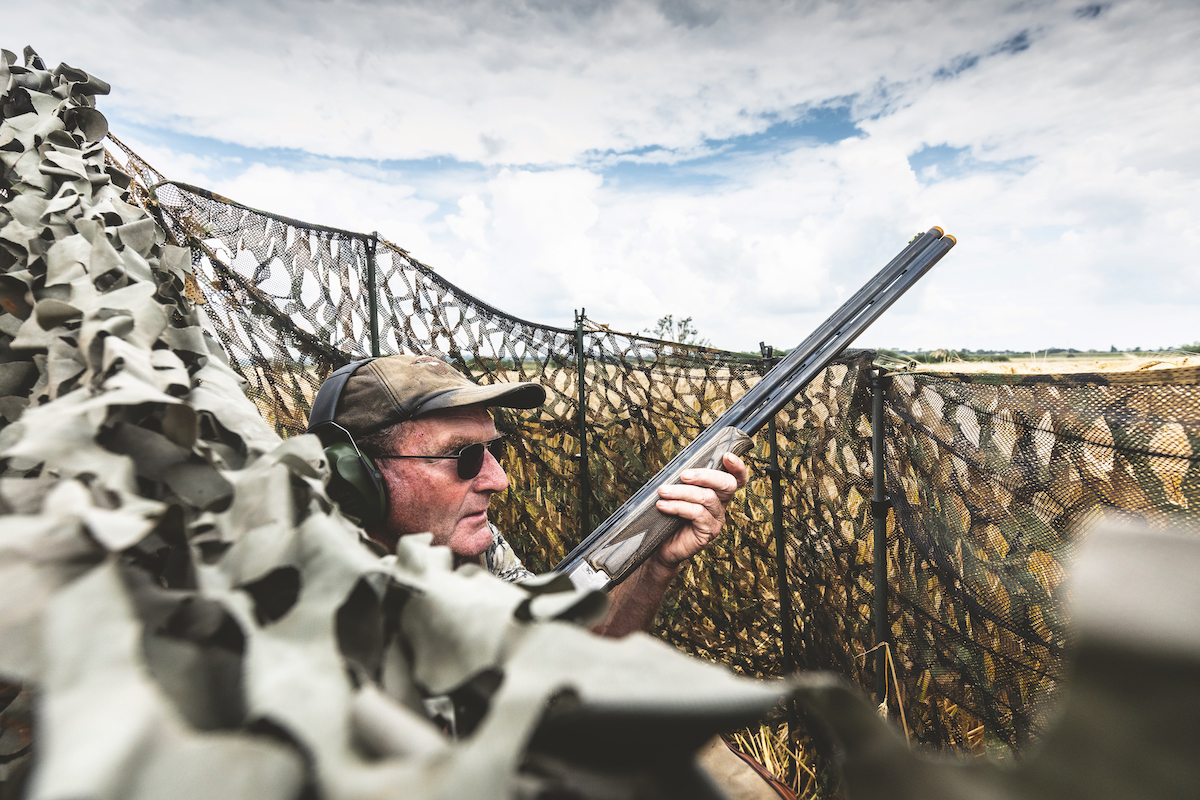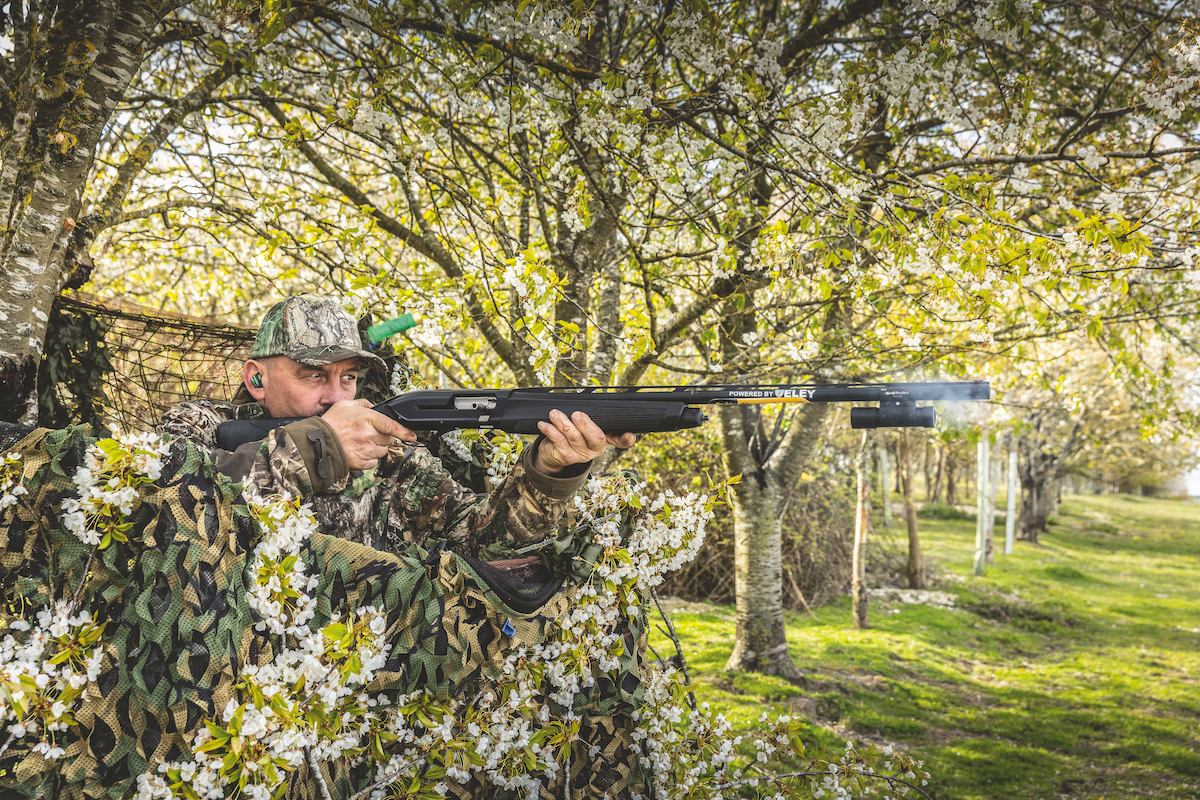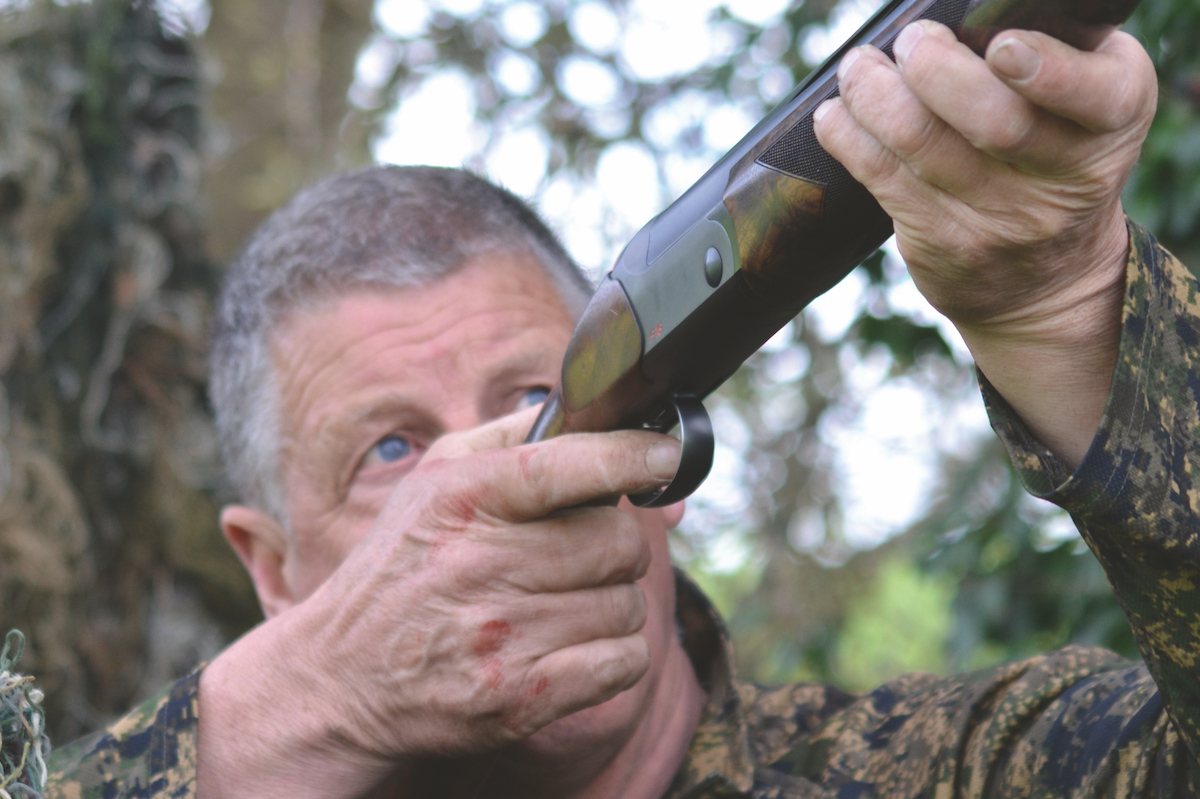Pigeon-shooting: anticipating their behaviour
Peter Theobald takes a look back at his and Paul’s 2022 pigeon-shooting adventures to see how they could be improved

Peter takes aim over a field of oilseed rape
As usual at the end of each year I like to look back at Paul and my pigeon-shooting outings to see if there is anything we could have done to improve bag numbers. It’s rather like an end of term report. Whilst overall numbers in 2022 were marginally down on previous years, it was noticeable that the quality of shooting vastly improved. By that I mean we had very few ‘easy’ shoots, ones where ‘X marks the spot’ and pigeons decoyed in with complete confidence.
We had to take on far more 45-yarders skirting the pattern than usual, making for really testing sport. Of course, big numbers have never been the overriding criteria for a successful day in pigeon-shooting, but Paul and I try to understand why birds did not react in the way that our reconnaissance suggested.

Trust what you see on the day, it may be different to earlier observations
Analysis
As is often the case, several factors can combine to determine if and when pigeons visit a field, but usually it is fairly obvious what has gone wrong. One of the biggest lessons we learned for pigeon-shooting is to trust what your eyes are telling you on the day you decide to shoot. You may have watched them piling into a part of the field yesterday, but today, for reasons only a pigeon will know, they have decided they prefer the other side.
We know from experience that it is always best to let the birds show you where they want to go. A perfect example of this was a big day we enjoyed on wheat stubble in the middle of last September. A 100-acre field was being serviced by two very busy flightlines. The previous day I had counted more than 240 birds arriving in just 20 minutes. Expecting a big day, we arrived early and already both lines were beginning to rev up.

The decoys seemed to have little effect
The previous day the whole field was covered with possibly 1,000 pigeons, fluttering randomly here and there, but on this day both lines converged in the middle of the field. We decided that Paul would set up there and, because it seemed counter-productive to both occupy one position on such a large field, I chose to position myself directly under one of the flightlines, again in the middle of the field.
Probably only 20% of pigeons that could clearly see my pattern actually decoyed, the rest made a beeline for Paul who was having a war in the distance. He put it down to his superior decoying skills but in reality the birds wanted that part of the field and nothing I did could persuade them otherwise. (Read here for advice on improving pigeon decoy patterns).

Paul and Peter decide where to set up
Some don’t like it hot
An unusual factor last year was the exceptionally hot summer. There is no doubt in my mind that it had a detrimental effect on pigeons’ habits, to the point where, on some days, they did not feed. This altered their condition, possibly dissuading them to attempt to breed. Certainly, we did not see any number of youngsters until well into September. Outings were condensed into a couple of hours, with pigeons nipping out briefly before retreating to the shade. (Read more here on how the hot weather of 2022 affected pigeons).
On the plus side, because we had no rain for six weeks in this part of Essex, stubbles lasted much longer because none of the loose grain germinated. We were still shooting these fields up to the middle of last November. But once the fields were depleted the pigeons vanished overnight due to one of the heaviest acorn crops that I had seen for years.

Only around a fifth of the pigeons that saw the pattern decoyed
Migration
I have always been sceptical of big pigeon migration to the near continent because their farming regime is very similar to ours, but I do believe they are quite capable of vacating an area in favour of a big natural harvest. This situation was accentuated last year by the fact that many of our farmers have abandoned trying to grow rape due to the devastating effect of flea beetles. I said some months ago that pigeons were unlikely to touch what rape we did have in December, if they did not return from where they have spent the three months before.
Last year was certainly interesting for pigeon-shooting, so let’s see what this year has in store for us.








